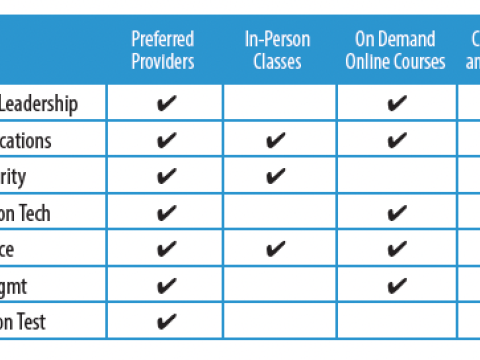Shop for STEM Supports Teacher Grants
Shopping for good is made easy by the AFCEA Educational Foundation and the CauseNetwork, which offer consumers access to discounts at more than 1,000 retailers that donate a portion of each purchase to support science, technology, engineering and mathematics (STEM) education.
Shopping for good is made easy by the AFCEA Educational Foundation and the CauseNetwork, which offer consumers access to discounts at more than 1,000 retailers that donate a portion of each purchase to support science, technology, engineering and mathematics (STEM) education. Shop for STEM allows anyone to register and shop from a range of retailers, from small businesses to giants such as Amazon.com, Target and Wal-Mart. Simply visit shopforstem.org, and sign up quickly and easily with your email address.
Money raised by Shop for STEM supports the Educational Foundation’s grants for teachers, known as Gravely Grants. In fiscal year 2016, the foundation provided more than $40,000 to teachers across the United States who are providing innovative STEM learning opportunities in their classrooms. The more you spend at Shop for STEM, the more STEM education stands to gain.
Such “cause-sumption” is particularly popular with millennials, the largest consumer group, Forbes reports, noting that more than 80 percent expect companies to make a public commitment to good corporate citizenship.
Cause marketing is one of many ways merchandisers are trying to attract and retain online customers, in addition to free shipping and countless other special options. Businesses may offer nonprofit charitable organizations a percentage of sales ranging from roughly 3-10 percent if customers register with an online affinity program.
Shop for STEM offers a steady stream of support for its cause. For the first time ever last year, shoppers turned to the Internet for most of their purchases. An annual survey by analytics firm comScore and UPS found that consumers are now buying more items online than in stores. Shoppers make 51 percent of their purchases online compared with 48 percent in 2015 and 47 percent in 2014, according to the results.




Comments